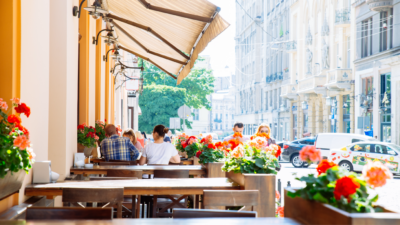Personal consumption fuels the lion’s share of the U.S. economy and 2016 witnessed that segment increase to 69.1% of total gross domestic product. This spending, along with the rapidly changing demands of consumers, dramatically impacts retailers’ business models, which increasingly includes brick-and-mortar stores in combination with omnichannel and e-commerce options.
Each year, specific holidays and events can be expected to generate a significant portion of retailers’ total annual sales. Retail sales for the 2016 holiday shopping season, the largest of such seasonal events, increased by 4% over 2015, according to the National Retail Federation. Sales totaled $658.3 billion, of which $122.9 billion were non-store sales — an increase of 12.6% over the year before, as e-commerce continues to account for a larger bite of total spending.
With the spending spree over and post-holiday sales, returns and exchanges complete, one might be tempted to think their wallet will get a rest. Think again.
February brings with it the Super Bowl. Judging by the number of people who take the Monday after off, this event is practically becoming a national holiday. Indeed, Super Bowl-related consumer spending has nearly doubled over the past decade, peaking at $15.6 billion in 2016 before reversing course this year with estimated spending falling to $14.2 billion. This decline also coincides with a drop in television ratings for NFL games during the 2016 season, but that’s a different discussion. Spending leading up to and on game day includes food and beverages, game-related merchandise, other apparel and, of course, televisions.

Source: National Retail Federation Super Bowl Spending Survey conducted by Prosper Insights & Analytics
Super Bowl Sunday is now the second-highest food consumption day in America, following Thanksgiving. It is estimated that 1.33 billion chicken wings and 12.5 million pizzas are consumed, along with 11.2 million pounds of potato chips, 3.8 million pounds of popcorn and a staggering 104.9 million pounds of avocados. Football fans love their guacamole! To wash down this gala of junk food, fans will spend $1.2 billion on beer, $594 million on wine and $503 million on liquor — explaining the “Monday off” comment above.
Note the focus on food. In fact, 80% of the total spending is on food, snacks and beverages. Good news for grocery-anchored shopping center owners. But, online retailers are nipping at the heels of traditional grocers and believe “grocery is the holy grail.”
While bricks-and-mortar retailers are investing in click-and-collect services, some believe their investment in innovation is still too low. For example, Amazon spends more on innovation than the 20 largest supermarket companies in America combined, according to Jerry Sheldon, retail analyst with IHL Group.
Okay, so the holidays are over. Your Super Bowl Party was a success. Ready to sock a few bucks into the 401(k)?
Not so fast. Here comes Valentine’s Day with estimated consumer spending equaling $18.2 billion. The average person will spend $136.57, including flowers, candy, dining out and other gifts. This is also a decrease from 2016, which recorded a record $19.7 billion.
Gentlemen, don’t think that’s an excuse to try to save a buck. Approximately 53% of women say they would end a relationship over being snubbed on Valentine’s Day. And don’t forget Fido, or you may not even be welcome in the doghouse. Nearly 20% of Valentine’s Day shoppers plan to buy a gift for their pet, averaging $4.44 per furry, feathered or scaled friend.
In sum, American consumers, as is the case in all the world’s developed economies, are largely responsible for a nation’s economic health. So, get out there and visit your favorite store or online site. I wonder, is it too early to order chocolate bunnies?
An architect turned broker turned researcher with a life-long curiosity about the built environment, Loren analyzes trends and data to provide insight to brokers and clients. He is passionate about making sense of the numbers and creating a value proposition through the story that they tell.

 Loren DeFilippo
Loren DeFilippo
 Aaron Jodka
Aaron Jodka Nicole Larson
Nicole Larson
 Anjee Solanki
Anjee Solanki